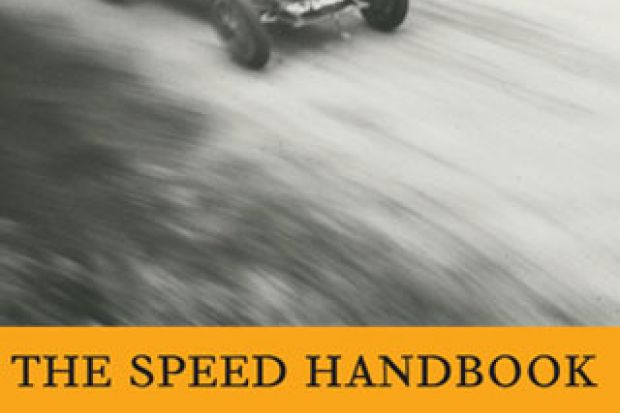Ironically, just as the American automobile industry falters, there have appeared several excellent books on its cultural, social and political dimensions, including Brian Ladd’s Autophobia: Love and Hate in the Automotive Age, Tom Vanderbilt’s Traffic: Why We Drive the Way We Do (And What It Says About Us) and Cotten Seiler’s Republic of Drivers: A Cultural History of Automobility in America. Enda Duffy’s The Speed Handbook is every bit their equal. His starting point is Aldous Huxley’s 1931 essay Wanted, a New Pleasure, which claimed that “Speed … provides the one genuinely modern pleasure”.
Duffy extends that observation to a remarkable range of 20th-century phenomena: American and European novels, paintings, posters, photographs, films, advertising and news reports. He contends that the prevailing negative connotation of speed with clocks, schedules and Frederick Taylor’s stopwatch-driven “scientific management” was gradually “rerouted into the excessive speed of individual pleasure”.
The automobile was not the only invention to provide that pleasurable experience, but it transcended all others, allowing people “to feel modernity in their bones”. Somewhat unconvincingly, Duffy suggests that experiencing speed at home replaced thrilling adventure abroad, as European colonial empires declined.
Duffy implicitly refutes the claims of contemporary high-tech inventors and promoters that the pace of change since the 1980s is unprecedented and that Americans, among others, had previously led comparatively slow-paced lives. The Speed Handbook suggests otherwise. Those who invoke the comparatively greater speed of travel and of communications today vis-a-vis the early 1900s miss the real point: how the world was perceived by ordinary people then and now. Duffy respects and reads the past in its own complex terms.
To be sure, people who rode and witnessed early 19th-century railroads made similar statements about their pace of change. Yet Duffy convincingly interprets a representative painting of early railroads, J.M.W. Turner’s Rain, Steam, and Speed - The Great Western Railway (1844), as a “passive experience - as passengers borne along” in a train even as that train “literally vaporizes the landscape through which it cuts”.
By 1908, things had changed. Duffy contrasts such passivity with Jacques-Henri Lartigue’s photograph of a racing car driver, November 9, Road from Nice to Peira-Cava. The camera suffers from “technological inadequacy” in trying to capture the object’s speed. Yet that forces a focus on the driver. The flash in his eye resonates fear. Unlike railroad passengers, the driver must be alert as he tries to control the situation. The possibility of accidents and of deaths became one of the automobile’s thrills. Duffy further contrasts these two works with a 1915 avant-garde lithograph by Francis Picabia, Portrait of a Young American Woman in a State of Nudity. The nude has become a spark plug critical to automobiles’ speed. The tender female body is now “wholly technologized” and “floating upright in total blankness”. Unlike the painting or the photograph, there is no connection to any actual landscape or space. Also unlike them, the “forever” printed on the object’s side disconnects it from real time. The image could be from a sales catalogue of auto parts and reflects the consumer culture that steadily made speed into just another commodity. It is a “thoroughly profound” joke on Western values and traditions.
Like Seiler, Duffy understands the political nature involved. Speed rewarded citizens depending upon their geographical location, income, and - being a predominantly male province - gender. Speed also necessitated governmental controls: highway construction, traffic regulation and driving licences. Yet I wonder if Duffy appreciates the inability of many workers in the automotive industry and other sectors - including those in Detroit - to afford Henry Ford’s Model T, the cheapest American car through the early 1920s. They, presumably, never experienced speed first hand. Meanwhile, for many workers, speed remained associated primarily with Taylor’s stopwatches and other non-pleasurable methods of control. Still, The Speed Handbook is a brilliant book that, despite being accessible to general readers, must be digested slowly to be fully appreciated.
The Speed Handbook: Velocity, Pleasure, Modernism
By Enda Duffy
Duke University Press, 320pp, £62.00 and £15.99
ISBN 9780822344308 and 44421
Published 25 September 2009
Register to continue
Why register?
- Registration is free and only takes a moment
- Once registered, you can read 3 articles a month
- Sign up for our newsletter
Subscribe
Or subscribe for unlimited access to:
- Unlimited access to news, views, insights & reviews
- Digital editions
- Digital access to THE’s university and college rankings analysis
Already registered or a current subscriber? Login
